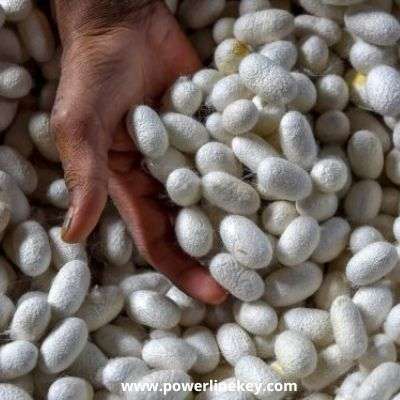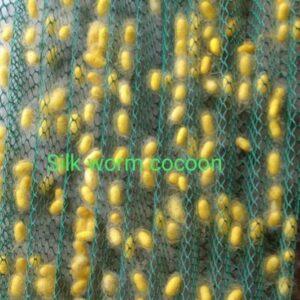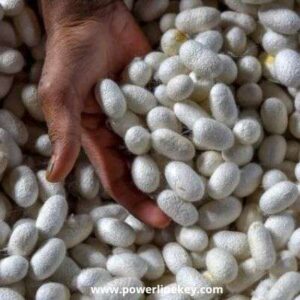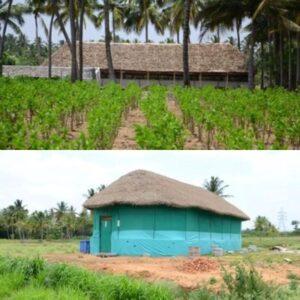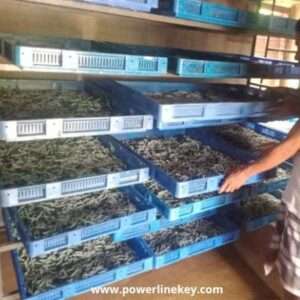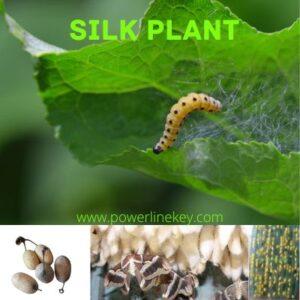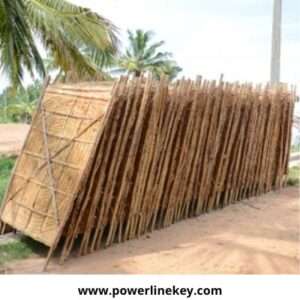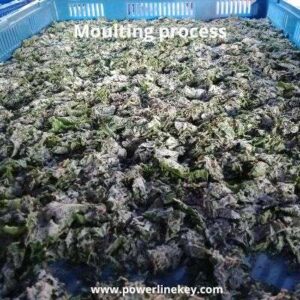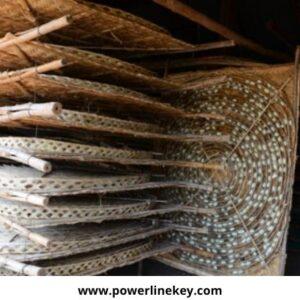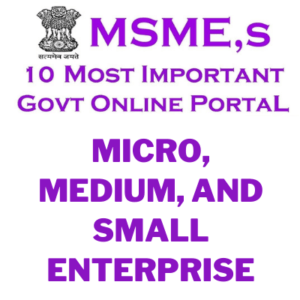Micro small medium enterprises village business ideas-Starting silkworm cocoon business
Micro small medium enterprises village business ideas another top demandable business example is silkworm cocoon production business. Silkworm cocoon is the main resource of natural silk thread production. It is part of the pre-cocoon production process.
In this article, you will get to know how you can start a business by supplying quality silkworm cocoons. You are going to know what are the requirements of the silkworm cocoon production business. You will also know, the making process of a quality silkworm cocoon, and Silkworm processing main factors.
How you can get govt of India sericulture free skill development training, Best techniques of silkworm cocoon process, Govt of India silk board scientist-D valuable suggestion and how to get govt of India silk board present schemes.
So stay tuned with powerlinekey.com small medium enterprises growth blog.
Table of content:
- About the natural silkworm cocoon production business:
- How to start a profitable silk business:
- Silkworm cocoon production business requirement:
- Main factors of silkworm rearing:
- How to build silkworm Rearing house tips:
- Making the process of silk from silkworm:
A Quality silkworm cocoon production process:
B. Preparation of silkworm rearing process:
C. Collecting silkworm eggs:
D. Silkworm eggs Hatching:
E. Transferring Mulberry silkworms:
F. silkworm Feeding process:
I. Silkworm Cleaning process:
J. Silkworm Moulting period:
K. Tray measurement:
L. Silkworm Spacing or tray extension:
M. Slake lime process:
- How to get govt of India sericulture free skill development training:
- Silkworm cocoon production best techniques:
- Govt of India sericulture board scientist-D valuable suggestion:
- How to get govt of India Silk board schemes:
- Conclusion:
FAQ:
- What is the source of mulberry silk?
- What are the benefits of silk?
- Why silk is a popular fabric?
About the natural silkworm cocoon production business:
The natural silkworm cocoon production business is one of the eco-friendly business models. It is the most demandable micro small medium enterprises example business model because it is Sericulture based natural silk fiber production process.
Natural silk fiber is made of thread used in many different fabric productions. The rearing of silkworms is the only resource of natural raw silk production.
Natural silkworm rearing has different stages, after 25 to 30 days silkworm produces silk threads, it is the final stage of silkworm rearing, as known silk cocoon spinning.
Silkworm cocoon production is a profitable global demand-supply business and village business model.
How to start a profitable silk business | How to start a profitable silkworm cocoon supply business:
As it is a natural and eco-friendly product, Silkworm cocoon production’s major requirement is a sweet environment for the silkworm rearing process.
Silk has many varieties, as per present successful silk cultivation results, mostly 4types of silk produces in India:
1. Mulberry silk,
2. Eri silk,
3. Muga Silk,
4. Tasar silk,
As it is genetically affected by different environments and weather, it is recommended to choose the right silkworm eggs for a sweet weather environment.
Silkworm cocoon production business requirement | Quality Silk cocoon production business requirement | Micro small medium enterprises example
The natural quality silkworm cocoon production business’s first requirement is to choose the right sweet silk cultivation place.
Silkworm cocoon production requires:
1. Sweetable Land,
2. Plantation:
(It depends on the silkworm) For Example, Mulberry plants and leaves have high fiber resources for mulberry silkworm feeding. Mulberry silk plant is most preferred by most Indian silkworm rearers.
3. Hygienic silkworm Cocoons rearing room,
4. Latest skills,
5. Trays,
6. Cleaning materials and medicines,
Main factors of silkworm rearing:
Current Weather temperature and humidity are the most important factors of silkworm rearing good results. 24″C to 28″c temperature is the best temperature to produce quality silkworm cocoons.
As weather temperature always fluctuated by nature, a minimum of 15″c to a maximum of 40″c temperature fluctuation can be adjusted using various scientific methods.
Aswell 65% to 80% natural humidity is the best for quality silkworm rearing growth. A bit of temperature up and down for a period of time doesn’t affect silkworm growth.
When the temperature goes under minimum and up to maximum, it is necessary to use supportive scientific methods, guided by the sericulture department.
How to build silkworm Rearing house tips:
A rearing house requires the silkworm to cocoon process. There are various types of cocoon processing houses available.
Some are built with bamboo houses, wooden houses, mud houses, half-wall iron nets, or cement houses. However, an ideal rearing house should maintain the required necessary house temperature and natural air flows.
Expert says east-west direction house is good for better airflow. It should also protect from various conditions example summer heat, rainfall, and cold in the winter season. Additionally, in extreme weather fans, a cooler, and room heaters can be also used.
Silkworm rearing Room measurement:
100 dfl silkworm rearing required a minimum of 200 to 400sf of room.
A quality silk cocoon rearing-production process | Making the process of silk from silkworm
Quality silk cocoon production required the latest techniques in the cocoon rearing process. Examples down below:
a. Preparation of silkworm rearing process:
It begins with the preparation process of rearing silkworms. it is a scientific method in which farmers should understand the reason behind the complete rearing preparation, and farmers also should react with the best farming techniques.
That is why farmers are required to get professional skill development training from highly qualified experienced trainers. And get all the important steps and tools.
b. Collecting silkworm eggs:
A high-quality sweet silkworm egg or ready silkworm collection is preferred because as per present weather and environment are the major factors of quality silkworm rearing growth. In the case of the Indian states Govt of India, a sericulture board or silk board can guide your proper research.
C. Silkworm eggs Hatching:
The Precoccon rearing process starts with the pairing, sterilizing, cleaning, washing, and hatching process. It is highly recommended to get practical knowledge and training before the startup final process.
These days it is easily available by the silk board with different variety of ready child silkworms.
d. Transferring Mulberry silkworms:
Newly hatched mulberry silkworms should transfer to the clean trays. During transfer to the new trays, the first mulberry leaves may be cut into small sizes of square or round shape and served them.
Newly hatched or born silkworms even cannot eat normal mulberry leaves, this is the reason serving new soft mulberry first leaves are recommended. First 2 to 3 days silkworms are trying to get new leaves and water to survive.
e. silkworm Feeding process:
During the 4th-day mulberry 2nd or 3rd soft leaves can be served, you may also check about silkworm growth. Slowly day by day healthy 3rd,4th, and 5th mulberry leaves can be served. Standard feeding time is 4 times a day, after 6 hours.
f. Silkworm Cleaning process:
Another most important silkworm rearing process is cleaning, from time to time beds should be cleaned with the hygienic method. Disinfect surrounding house time as per trainer instruction. 1st stage means 1st 3 days cleaning not required,
after the 4th day starts the 1st, molting period, (it is 24 hours) clean the 5th day and change it to a new tray.
During the 5th to 6th days, cleaning is not necessary but the spacing is required.
During the 3rd stage, 4th stage cleaning is required before and after moulting.
During the 5th stage clean every day, once a day. Early morning time is the best time, however other sweet time is also preferred.
g. Silkworm Moulting period:
4th running day is the 1st moulting period time, during moulting Silkworms don’t eat. In this process
usually, they change their old skins. After 7 days start 2nd moulting, After 11 days start 3rd moulting After 16 days start 4th moulting. After 18 to 24 days skinning process starts.
h.Tray measurement:
Usually, 2/3 feet measures one tray size. Various Trays can be used example bamboo trays or plastic-made trays etc.
i. Slake lime process:
During moulting time slake lime should be used on the worm. The favorable time for using lime dusting is in the early morning or in the evening. The dusting of slake lime should be used with a clean cotton cloth, same to follow label after moulting.
j. Silkworm Spacing or tray extension:
Slowly silkworm grows to mature silkworm, in this time silkworms need little space and airflow. As silkworm grows day by day, they need enough space or tray for better growth.
1st stage:2/3 feet tray can be used for 50 dfl silkworms.
2nd stage:2/3 feet tray can be used for 25 dfl silkworms,
3rd stage: One tray silkworm extends into 4 to 5 trays as per growth.
Govt of India sericulture board scientist-D valuable suggestion:
As per our visit to Govt of India Central silk board research center and discussion with a scientist -D, Mr. Narayan Biswas explains various silk business opportunities and suggestions toward Silkworm growers:
1. Get the right knowledge and latest skills,
2. Choosing the right place or environment for better cocoon production,
3. Step-by-step feeding techniques should follow,
4. Disinfect properly inside or outside the house, before process, Cleaning is a very essential step for healthy silkworms,
5. Spacing is another important step for silkworm growth,
How to get govt of India sericulture free skill development training | How to get govt of India Silk board schemes:
There are many sericulture free training schemes available by the Govt of India. For any kind of Indian sericulture information, training, and govt schemes you may connect with Govt of India silk board or your state’s nearest silkworm clusters. You can also visit the Govt of India Silkboard website or visit: Here
Get more micro small medium enterprises example, Silkworm business part-1 Click: Here
FAQ:
What is the source of mulberry silk?
Mulberry Silkworm is the main resource of mulberry silk. After 30 to 35 days of the mulberry silkworm rearing process (famously Bombyx mori) feeding with mulberry fiber leaves, the silkworm produces natural silk thread cocoons, which are used for various silk fabrics design.
What are the benefits of silk?
Silk is naturally produced and it has protein or fiber-containing (fibroin), which is why silk-made fabrics are preferred for various clothes and design purposes.
Why silk is a popular fabric?
Because of its natural high fiber, silk-made fabric helps to keep the body warm in the winter season, similarly, in summer it helps the human body absorb air. Additionally, because of silk thread’s natural shine, it is used for special wear dress manufacturing.
Conclusion:
If you have land or you can arrange free land, silkworm cocoon production is one of the profitable micro small medium enterprises examples.
What you need is the right knowledge, professional skill, and preparation, it only requires 30 to 35 days of the process, and a similar process can be multiplied many times in a year. Your valuable share or email subscription would be appreciated by powerlinekey.com.
Also, read our business-related article:
Micro Small Medium Enterprises Example Silk Business Ideas Part-1: Click here
Business Plan Ideas | Small Medium Enterprises Planning: Click here
Collateral Free Business Loan Apply Online – Micro Small – Medium Enterprises Finance: Click here
Top 11 Small-Medium Export-Import Business Demand | Indian Trade Data: Click here
Msme online govt helpline, MSME,s 10 most important Govt online portal in India: Click here
Our recommended small medium business development software and tools: Get here
Skill development: Get here
Start Earning money: Click here
Thank You



